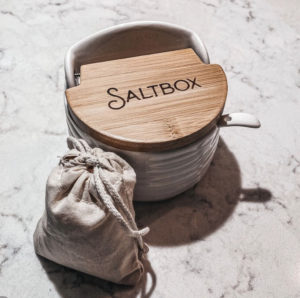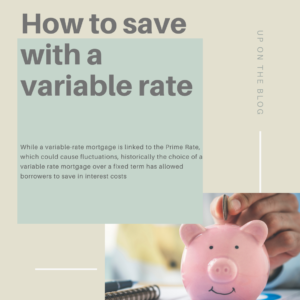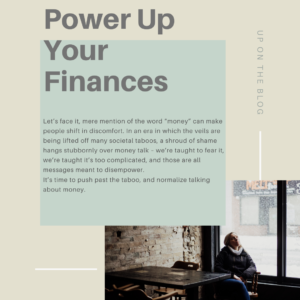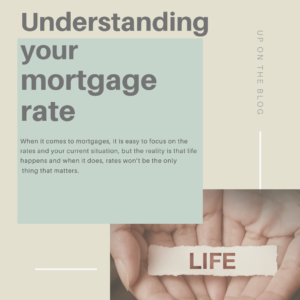|
|||||||||||||||||
|
|||||||||||||||||
|
Headline inflation fell to 2.8%–down from 3.4% in May.
General Amanda Walczyk 25 Jul
General Amanda Walczyk 25 Jul
|
|||||||||||||||||
|
|||||||||||||||||
|
General Amanda Walczyk 25 Apr
On April 18, Canada’s national banking regulator, the Office of the Superintendent of Financial Institutions (OSFI), released its second Annual Risk Outlook (ARO), outlining what it believes are the most significant headwinds facing the Canadian financial system – and what the regulator plans on doing about it.
According to the report, the severe downturn in real estate prices and demand following their significant rise during the pandemic was the most pressing issue. OSFI acknowledges that the housing market changed significantly over the past year, and house prices fell substantially in 2022. The regulator is preparing for the possibility that the housing market will experience continued weakness throughout 2023.
The report also highlights how the Bank of Canada’s rate hiking cycle has impacted borrowers’ ability to pay down mortgage debt, with the central bank increasing its benchmark cost of borrowing eight times between March 2022 and January 2023, bringing its Overnight Lending Rate from a pandemic low of 0.25% to 4.5% today.
Mortgage holders may be unable to afford continued increases in monthly payments or may experience a significant payment shock at the time of their mortgage renewal, leading to higher default probabilities. Given the considerable impact of real estate-secured lending (RESL) activities in the Canadian financial system, a housing market downturn remains a critical risk.
OSFI also highlights the dangers posed by more borrowers hitting their trigger rates; according to a National Bank study, eight in ten variable fixed-payment borrowers who took their mortgages out between 2020-2022 are impacted. Lenders have addressed this by extending the amortization period for affected borrowers, but OSFI says this is just a temporary solution.
Borrowers and lenders alike will need to pay the price in due course, as OSFI points out. The growth in highly leveraged borrowers increases the risk of weaker credit performance, potentially leading to more borrower defaults, a disorderly market reaction, and broader economic uncertainty and volatility.
These recent comments strengthen expectations that stricter mortgage rules could be in the cards before the year ends. Back in January, OSFI announced it was considering making tweaks to its Guideline B-20, which outlines borrowing and risk requirements for banks underwriting residential mortgages and qualification rules for borrowers, including the mortgage stress test.
OSFI may increase borrowers’ debt servicing ratio requirements, making it more challenging for those with larger debt loads to qualify for a mortgage. It is also considering limiting how many of these higher-leveraged borrowers banks can have in their portfolios, potentially leading to fewer borrowers making the cut at A-lenders and turning to the B-side and alternative mortgage market.
Finally, OSFI may change the threshold criteria for the mortgage stress test. Currently, borrowers must prove they can carry their mortgage at a rate of 5.25%, or 2% above the one they’ll receive from their lender, whichever is higher. However, following last year’s rapid rate increases, the 5.25% threshold has become obsolete, with all current market rates above 3.25%.
OSFI wrapped up consultations on these potential changes late last week and will release a report on its recommendations. Borrowers should keep an eye out for changes in the months to come.
Published by Sherry Cooper
General Amanda Walczyk 11 Aug
Introduction 
Just like how I want to provide you with a quick and easy mortgage solution, the Saltbox is my way of thanking you for trusting me with your mortgage needs. After all, having a Saltbox in your kitchen allows you to customize meals and access just the right pinch of salt super quick and easy! Albeit, if you’re not a big salt person, don’t fret, put this little jar in your washroom and enjoy the health benefits in the bath. I’d love for you to share your creations on social, tag my instagram page so I know what’s up 😉
Hawaiian-Style Black Lava Salt
Made with activated charcoal and 100% pure sea salt from the Pacific Ocean, the activated charcoal not only has deep hues but is also a natural detoxifier with a lower sodium count and antioxidant properties. The rich black colour and crunchy grains add a dramatic finish to any meal and is guaranteed to be a natural conversation starter at your next dinner party. Hawaiian-Style Black Lava Salt pairs well with seafood, meat and fruits! The black lava salt doesn’t change the taste of foods but definitely brings a new depth and more flavour to your meals without overpowering the dish.
Looking for a couple ideas to add a little smokey, yet slightly bitter taste to a dish:
 Sprinkle a little black salt over root veggies or some Brussel Sprouts
Sprinkle a little black salt over root veggies or some Brussel Sprouts
Sprinkle a little on crisp roasted potatoes
Air frying chicken wings? Toss a pinch on top!
Sprinkle a little on your next steak or a meaty fish like Tuna or Halibut
Avocado Toast fan? Finish it off with a sprinkle of black lava salt for a delicious smokey crunch!
Bon Appétit!
Hawaiian-Style Black Lava Salt for Bathing
Looking to relax in the bath, add ¼ cup of black lava salt to your bath water. Additionally, use the black lava salt as a body scrub to unclog pores, keep skin oils at bay, improve blood circulation and to enjoy a healthy glow! Be sure to google fun ways to use your lava salt in scrubs and in the bath!
Pink Himalayan Salt
This beautiful rose coloured Himalayan Pink Salt is mined from ancient pink salt deposits below the Himalayan mountains. Himalayan Pink Salt is an unrefined, raw salt, containing no additives or chemicals. It remains in the same pure form today as when it was formed over two hundred and fifty million years ago.
Looking for a couple ideas to add a little pink salt to your next dish?
Simply put, pink salt is less refined than table salt and can be used in all the same ways. Use it as you would in baking, cooking, and to finish off a meal. Being less refined means it’s better for you, giving you nutrients like zinc, iron and calcium.
Sprinkle on top of green beans coated in butter, nothing like a delicious vegetable dish!
Sprinkle in your soups to give them a little extra zing
Use pink salt the next time you bake cookies or a cake
You can even sprinkle a little on your popcorn
Pink Himalayan Salt for Bathing
Add 1 cup of pink salt to your bath and soak. Himalayan Pink Salt has many benefits in the bath such as its anti-inflammatory, antibacterial and antiseptic properties, making it a great cleanser for your skin. Just like epsom salts, Pink Himalayan salt can also soothe muscle fatigue and improve skin appearance to name a few beneficial properties for these little ancient crystals.
If you stumbled upon this blog and don’t yet have a saltbox, I give them to my clients. Have a mortgage need? Apply Today
Yours Truly,
Amanda
amanda@saltboxmortgages.com
519.497.9256
General Amanda Walczyk 30 Mar

When it comes to mortgages, the age-old question remains: “Should I go with a variable or fixed-rate?”. To make an informed decision, it is important to look at the type of buyer and the historical trends.
When it comes to variable versus fixed-rate, it is important to understand what these mortgages are based off of. Fixed mortgages are so named as they are based on a fixed interest rate that is set for the duration of the term with fixed payments. On the other hand, variable-rate mortgages fluctuate with the Prime Rate. This can either mean fluctuations in your payment, or if you choose to have set payments, the interest portion of the payment.
In the last 10 years, the prime lending rate has gone from 2.50% to 3.95% and now sits at 2.45% as of January 2022. Due to recent events, these rates have seen even more of a downturn providing huge benefits to new borrowers looking to pay as little as possible.
While a variable-rate mortgage is linked to the Prime Rate, which could cause fluctuations, historically the choice of a variable rate mortgage over a fixed term has allowed borrowers to save in interest costs.
However, due to the uncertainty and potential fluctuations that can occur with a variable-rate mortgage, it comes down to the borrowers comfort. Some individuals have no wiggle room in their budget for potential changes in mortgage payments, or they do not like the uncertainty. For these clients, a fixed-rate would be the best choice.
On the other hand, clients who qualify for variable-rate mortgages have a unique opportunity to take advantage of lower interest rates. If you have a variable-rate mortgage, you can either set a fixed-payment so that, if the interest rate drops, it means you are paying more on your principal loan each month. Or, if you have flexible payments, you may see your monthly payments drop in accordance to decreases in the Prime Rate. However, since every 10% increase in payment can save three years off the amortization of a five-year term, having fixed payments provide extra benefits. After all, extra pennies towards the principle can help make a difference over the life of a 25 or 30 year mortgage.
Let’s look at the following example:
Amy and Jake have a balance owing of $300,000 on their mortgage with a variable rate at Prime minus .80%, (giving us 1.65%) with current payments set at $703 bi-weekly. The mortgage matures in 24 months but they are considering locking in for a new five-year term at 3.34%. New payments would be $739. As much as they love their home, they are considering a move in the next couple years.
When reviewing this mortgage, it is more beneficial for them to keep the remaining variable-rate in place for two years. However, if they set the payments based on 3.34% or $739 bi-weekly, this allows them to pay an extra $72 on their mortgage per month. In 24 months, the savings on interest is $4,000 and their outstanding balance is $4,000 less than by staying in the fixed rate.
Another benefit to variable-rate mortgages is that, if you choose to sell before the mortgage term is up, the penalty is typically only three months interest as opposed to much heavier interest rate differential (IRD) calculations used to determine fixed-rate mortgage penalties.
With this strategy they don’t have to feel pressure to lock-in today, plus they can continue taking advantage of the lower variable rate.
If your mortgage is maturing in the next 90-180 days and you’re not quite sure what to do, it is a good idea to contact a Dominion Lending Centres Mortgage Professional. Not only can they provide tips for your existing variable-rate mortgage to help save you money, but they can help you assess whether fixed-rate is right for you or if you should make the switch.
General Amanda Walczyk 30 Mar

Let’s face it, mere mention of the word “money” can make people shift in discomfort. In an era in which the veils are being lifted off many societal taboos, a shroud of shame hangs stubbornly over money talk – we’re taught to fear it, we’re taught it’s too complicated, and those are all messages meant to disempower.
It’s time to push past the taboo, and normalize talking about money. Disrupt it by talking about it – openly and frankly – with your partner, your friends, your family, and your colleagues. Speaking of partners, it’s important both parties are open with one another about their fears, feelings, and goals in regards to money. This is particularly important in opposite-gender households, where research shows that the male partner takes the financial lead in most homes.
stnce Senior Program Specialist, Sarah Zandbergen, has this to say about the hesitation to discuss finances with partners: “It can be difficult to bring up, no question, but if you’re sharing your life with someone, finances are bound to come up. A staggering statistic we came across in our research is that 90% of women will be the sole financial decision-maker in their family at some point in their lives. Knowing this, there is absolutely no excuse to defer ownership to someone else.”
Smash the stigma, and get radically transparent about your salary, your financial situation, your debts, your windfalls, and your savings goals.
And, hey, we get it – there’s a sense of comfort, albeit a false one, that comes with avoiding fiscal responsibility, because it temporarily absolves us of having to do anything, but remaining on the sidelines gives money a leg up on you. So if you want to be truly in control, increasing your knowledge about money, and how to save it, is a critical part of the confidence-building process
General Amanda Walczyk 30 Mar

When it comes to mortgages, it is easy to focus on the rates and your current situation, but the reality is that life happens and when it does, rates won’t be the only thing that matters.
First and foremost, the most important thing to remember is that a mortgage is a contract. That means that there is a penalty involved if the contract is ever broken. This is something that every homeowner agrees to when you sign mortgage paperwork, but it can be easy to forget – until you’re paying the price.
You’re probably wondering why you would ever break your mortgage contract? Well, you might be surprised to find out that 6 out of 10 mortgages in Canada are broken within 3 years and there are typically nine common reasons that this happens:
It is always important to think ahead when signing a mortgage agreement, but not everything can be planned for. In that event, it is important to understand the next steps if you do indeed need to break your mortgage.
Typically, the penalty for breaking a mortgage is calculated in two different ways. Lenders generally use an Interest Rate Differential calculation or the sum of three months interest to determine the penalty. You will typically be assessed the greater of the two penalties, unless your contract states otherwise.
In Canada there is no one-size-fits-all rule for how the Interest Rate Differential (IRD) is calculated and it can vary greatly from lender to lender. This is due to the various comparison rates that are used.
However, typically the IRD is based on the following:
In this case, these penalties vary greatly as they are based on the borrower’s specific mortgage and the specific rates on the agreement, and in the market today. However, let’s assume you have a balance of $200,000 on your mortgage, an annual interest rate of 6%, 36 months remaining in your 5-year term and the current rate is 4%. This would mean an IRD penalty of $12,000 if you break the contract.
Ideally, you will want to be aware of what your IRD penalty would be before you decide to break your mortgage as it is not always the most viable option.
In some cases, the penalty for breaking your mortgage is simply equivalent to three months of interest. Using the same example as above – balance of $200,000 on your mortgage, an annual interest rate of 6% – then three months interest would be a $3,000 penalty. A variable-rate mortgage is typically accompanied by only the three-month interest penalty.
When it comes to making the payment, some lenders may allow you to add this penalty to your new mortgage balance (meaning you would pay interest on it). You can also pay your penalty up front.
Whenever possible, if you can wait out your current mortgage term before making a change to your mortgage, it is the best way to avoid being stuck in the penalty box. If you cannot avoid a penalty, do note that, while only calculators can be great tools for estimates, it is best to call your lender or mortgage broker directly for the accurate number in the case of determining penalties.
If you are unsure about getting the best penalty terms, reach out to a Dominion Lending Centres mortgage broker today! They can help you find the best mortgage product for you.
General Amanda Walczyk 24 Mar
One of the best parts about life is that it is ever-changing. This is one of the reasons that mortgages are available on short-term contracts (such as the standard 5-year) so that you can adjust your mortgage over time to best suit your needs. However, in some cases you cannot wait until the term is up. In fact, roughly six out of ten homeowners with the standard five-year fixed rate mortgage break their terms within three years.
There are a variety of reasons to refinance your mortgage such as wanting to leverage large increases in property value or get equity out of the home for renovations. In some cases, you may be unable to wait until the term is up due to life events such as divorce, a new relationship, kids going off to college or needing to consolidate debt.
Before you refinance, it is important to understand that if you do this during your term you will be breaking your mortgage agreement and there are penalties that come with that. If at all possible, it is best to wait until the end of the mortgage term before refinancing.
If you cannot wait, it is important to understand how your lender is going to calculate the penalty if you break a fixed-rate mortgage. Canada’s big banks calculate mortgage penalties based on the discount you were given from the posted rate at the time that you signed your mortgage agreement. The bank firstly takes their new posted rate for whatever time you have left in your mortgage – if you break a five year contract on year three, this would be two years – and apply the same discount they first gave you. The difference between the two shows them the amount of interest they would lose for the rest of the term based on your current balance. This is what then becomes the penalty for breaking your fixed-year term and, in many cases, can be quite hefty. Other lenders such as credit unions and monolines will use the interest rate differential or a flat three-month interest penalty.
Beyond the penalties, there are a few other points to consider before refinancing:
So what can you do? There is an option to sign a fixed rate for a shorter term, such as three years, or you can also consider a variable rate as the penalties for breaking these mortgages are much lower.
Talking to a mortgage broker about refinancing can provide you access to even greater rates and mortgage plans to best suit your needs and what you are trying to accomplish through your refinancing strategy.
Regardless of why you are looking to refinance, it can come with a host of great benefits when done properly!
1. A Lower Interest Rate
Depending on where you are in your mortgage term, you could refinance to get a better rate – especially when done through a mortgage broker. On average, a mortgage broker has access to 90 lenders and is able to find you the best rate versus traditional banks which only have access to their own rate.
2. Consolidating Your Debt
When it comes to debt, there are many different types from credit cards to lines of credit to school loans to mortgages. However, many types of consumer debt have much higher interest rates than those you would pay on a mortgage. Refinancing can free up cash to help you pay out these debts. While it may increase your mortgage, your overall payments could be far lower and would be a single payment versus multiple sources. Keep in mind, you need at least 20 percent equity in your home to qualify.
3. Modifying Your Mortgage
The beauty of life is that it is ever-changing and sometimes you need to pay off your mortgage faster or change your mortgage type. Maybe you came into some extra money and want to put it towards your mortgage or maybe you are weary of the market and want to lock in at a fixed-rate for security. It is always best to do this when your mortgage term is up, but talk to a mortgage specialist about potential penalties if waiting is not possible.
4. Utilize Your Home Equity
One of the biggest reasons to buy in the first place is to build up equity in your home. Consider your home equity as the difference between your property’s market value and the balance of your mortgage. If you need funds, you can refinance your mortgage to access up to 80% of your home’s appraised value in cash!
If you are considering refinancing your home, or wondering if it is the best option for you, don’t hesitate to reach out to a Dominion Lending Centres Mortgage Professional today for expert advice!
General Amanda Walczyk 13 Jan
Feel like you’ve watched every piece of content available on Netflix, and Disney+, Crave, Hulu, or whatever streaming services you use? I feel the same way. I’m currently rewatching Friends for the millionth time and reciting lines that I didn’t even know I had memorized.
Sifting through vintage stores, furniture and design shops, and flea markets is normally an activity that I partake of weekly. Not being able to do that (I’m not complaining here – I am fully in favour of being safe and staying home) has left a hole in the creative and curious chunk of my brain.
If you’re like me, here are some architecture and design gems to satisfy your creative desires.
One of a kind crafts handmade by artist friends and family members, hair lampshades (that frizz in humidity), colour coordinated bookshelves, two-way folk-ish bedspreads, fake foods, and of course, live animals. Amy Sedaris’s apartment tour is like nothing you have seen before. It’s a collection of memories and artifacts. Learn how to properly style a bulletin board, and the logistical problems associated with colour coordinating your books. Nothing matches but everything works. This video is sure to bring a smile to your face and will make you question everything you know about design.
Hosted by the infamously smooth-spoken Roman Mars, 99% PI is a podcast for people who love not only architecture and design but the oddities and curiosities hiding in plain sight. I have several favourite episodes (if you want the full list, DM me on Instagram @everydayallergenfree) but these two are in the top spots. The Sunshine Hotel is a “guest” podcast, pulled from archives not produced by 99% PI, so it’s a little different. Learn about the people who inhabited a hotel in New York’s Bowery district decades ago. It’s an emotional rollercoaster, to say the least. And Game Over, even though it may be an episode about The SIMS Online, is yet again an emotional journey that will suck you in. What happens when a multiplayer website dies? A lot of sadness. Not to bring you down during an already difficult time in the world, but I always find this episode very grounding.
Let’s brighten things up now. My Houzz hosts a delightful home makeover show where beloved actors and celebs work with a designer to renovate a family member’s home. They consult with the family member about their design taste (it’s not a surprise makeover) and things they like or that are important to them. Then they kick them out and set to work on reimagining the space, usually enlisting the help of a spouse or parent for a sentimental project. This all leads up to the grand finale where the inhabitant of the home is brought back, and the new space is revealed. Expect tears of joy.
Decor Hardcore will suck you in. It will show you design never before imagined. It will convince you of your love for 70’s retro, no princess pink or nymph in fairyland, in every photo. It will, in short, rock your world. The photography is brilliant, the design often bursting with colour and texture. It’s extremely imaginative. I have no idea from which archives they source their incredible photos but it must be one that no one else is able to access because you’ll never see anything else like it. Check out this smaller collection they put together for Gucci, and head to their Instagram page for more.
Did you know that natural colours and dyes can be made from found objects, like pennies, flowers, sumac, and acorns? Reading this article from The New Yorker is like an instant shot of relaxation and gratification. It follows a group of ink enthusiasts (yes, this is a thing) as they walk around New York City collecting items to create their own dyes. The patience, focus, and passion of the leader, Jason Logan, rises off the page.
Be sure to check out other episodes and articles from the above sources for more design inspiration.
General Amanda Walczyk 6 Jan
Selling your home can be an extremely stressful experience. Between thinking about moving logistics and financials, it’s easy to miss the small details in between the process.
With that in mind, we’ve built this checklist for selling your home to help you keep track of the things that will get a potential buyer interested. Turns out, it’s not as simple as just fluffing pillows or doing a light dusting. “Put your buyer’s hat on and walk through your home like it is the first time,” Marilou Young, an Accredited Staging Professional and an Associate Broker with Virtual Properties Realty in the metropolitan Atlanta area, told Forbes.
Below is the ultimate checklist for selling your home.
For home sellers interested in the history of the house, make sure you’ve got all the information handy; this can include paperwork on renovations, property tax receipts, deeds and transferable warranties.
According to HGTV, it can be helpful to do some market research on what homes in your area are selling for- then shave 15 to 20 percent off that. This way, you attract multiple buyers who can end up outbidding each other and bringing up the price. While that can seem like a risky move, it could work in the competitive markets of big Canadian cities.

You want potential buyers to see themselves in the space, which is hard to do if you have family photos on the wall or personal items around. This would be a good time to start putting items in storage or try to keep your personal items out of sight. At the same time, you’re also ensuring that you’re keeping your house tidy—a must if you want to make your home sellable. Check around the house for dirt, stains or small cracks you might be able to fix. And if you have pets, make sure their litter boxes and play areas are also clean and odour-free.
Realtors can be helpful to take some of the processes off your plate, including marketing your home and arranging open houses. If you do go this route, none of this list will matter if you decide to work with a realtor that doesn’t know the market inside out. You can search their name on the Real Estate Institute of Canada to ensure that they’re qualified, and meet with them to see if you mesh and understand how they price your unit. At Proptalk, we also have this handy guide for more details.

While presenting an unconditional offer may win you the home of your dreams, it can also end up costing you more than you expected. If you’re mortgaged to the max, you can’t afford surprises like repairs or replacements that you haven’t already budgeted for. Consider a Home Protection Plan that includes an 18-month warranty and up to $20,000 in warranty coverage for major household features such as foundation, roof, heating and cooling.

General Amanda Walczyk 8 Dec
Many agents use their names to build their brand, but successful brands often share common traits. Firstly, a brand should be easy to recall. Secondly, your audience should have no trouble spelling your brand’s name. It can be frustrating to search for something on Google and not remember the exact name. For instance, my name, Amanda Walczyk, is not easy to spell at first attempt!
That’s why I chose Saltbox Mortgages…

In the Colonial Era, saltboxes were essential kitchen items. They held the most crucial ingredient: salt. Designed for easy access, these charming boxes were placed on countertops or hung on walls. Salt wasn’t just for flavouring; it played a key role in food preservation.
By the mid-1800s, settlers’ homes were modeled after traditional saltbox designs. These homes were crafted from high-quality materials, featured a sloped roof, and were typically 1.5 stories high. Today, modern Saltbox homes are considered upscale constructions.
So, how does this relate to mortgages? A mortgage is a significant investment in one’s life, much like salt in a kitchen. Mortgages are versatile and can impact your life in various ways.
I found inspiration in the historical significance of the name, bridging real estate, mortgages, and everyday life. While brainstorming at my kitchen table, I realized that incorporating “Amanda” or “Walczyk” into a memorable name was challenging. I mean, “Walczyk” is difficult to spell and pronounce – with 7 letters and only 1 vowel.
Throughout my career, I promise to offer versatile products and ensure a quality experience for you. Who knows, maybe one day I’ll assist you in financing your very own Saltbox home.
– Amanda Walczyk
